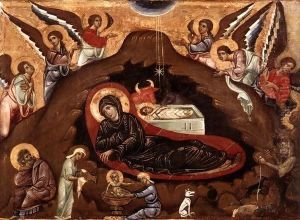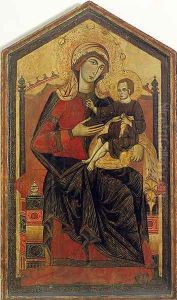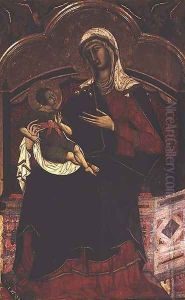Siena Guido da Paintings
Guido da Siena, whose life details are largely shrouded in mystery, was an Italian painter active during the 13th century, a period marking the transition from Medieval art to the more naturalistic styles of the Renaissance. Although documentation is scarce and much of what is known comes from later sources, Guido is recognized as one of the preeminent figures in Sienese painting before the emergence of Duccio di Buoninsegna, who would revolutionize Sienese art. Guido's birth is estimated around 1221, but even this is based on later art historical investigations rather than contemporary records.
Guido's style represents the Byzantine influences pervasive in Italian painting of the time, characterized by gold backgrounds, hierarchical compositions, and a lack of perspective, which was typical of the era's religious art. His figures are serene and static, with an emphasis on symmetry and frontal poses, reflecting the spiritual and iconic intent of his works. Despite these Byzantine characteristics, Guido's work hints at the early stages of the transition towards greater naturalism that would define the Italian Renaissance.
Perhaps the most famous work attributed to Guido da Siena is the large panel painting of the Madonna and Child, known as the 'Maestà,' housed in the Palazzo Pubblico in Siena. This piece, dated to around 1260-1280, showcases Guido's detailed approach to drapery and his ability to imbue his figures with a sense of dignity and grace, setting a standard for the depiction of the Virgin Mary in Sienese art. However, the exact number of works by Guido is subject to debate among art historians due to the lack of signed or documented pieces and the challenge of distinguishing his work from that of contemporaries and followers.
Guido da Siena's influence on the art of Siena was profound, laying the groundwork for the innovations of the following generations. While he lived and worked in the shadow of the emerging Florentine school, his contributions helped to establish a distinctly Sienese style that would flourish in the late 13th and early 14th centuries. Guido's death is believed to have occurred around 1290, though, as with much of his life, specific details are elusive. Despite this, his legacy as a pioneer of Sienese painting endures, bridging the gap between the Byzantine tradition and the burgeoning Renaissance.


